Sublimely beautiful yet easy to find, Swordtails are an iconic community fish that does well in almost any aquarium! Choosing the best tank mates for them comes down to compatibility with water conditions, size, and temperament. So here are the 10 best fish to keep with your Swordtails!
10 Best Swordtail Tank Mates
Here are 10 of our favorite tank mates for Swordtails:
Platy
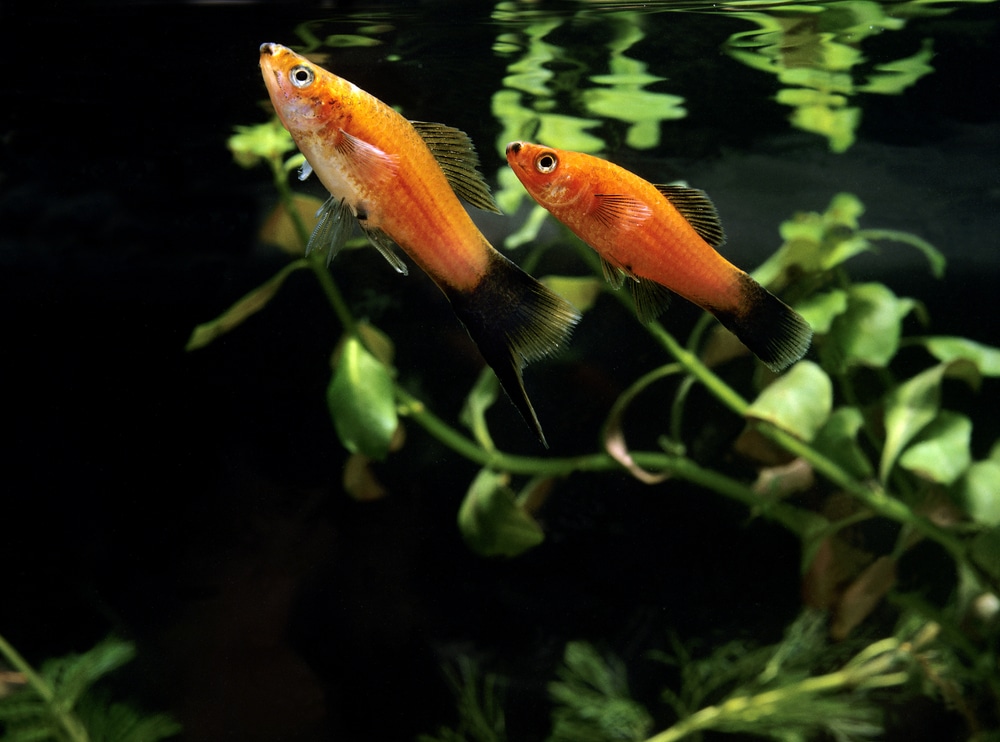
Platies are the closest cousins to Swordtails and have identical care requirements, making them perfect tank mates! Platies are a bit smaller and chunkier; they rarely grow beyond 2½ inches. However there are two species that come in more color varieties than Swordtails: the Maculatus and Variatus Platies.
Variatus are slightly slimmer and less common while Maculatus are the typical chunky livebearers we know and love. Both species are very hardy and prefer neutral to slightly alkaline chemistry (pH 7.0-8.0).
Like Swordtails, Platies will eat almost anything offered! Live food, flakes, pellets, algae, vegetables…And they happily breed as prolifically as Guppies do!
Since the parents will eventually eat their newborn fry you’ll need to keep a pregnant female in a breeder trap once she appears ready to give birth. Though as the fry grow larger you’ll want to move them to a separate quarantine tank to ensure they aren’t stunted by the lack of room.
- Scientific Name: Xiphophorus maculatus & variatus
- Origin: Mexico
- Size: 2½ inches
- Temperament: Peaceful
Lemon Tetra
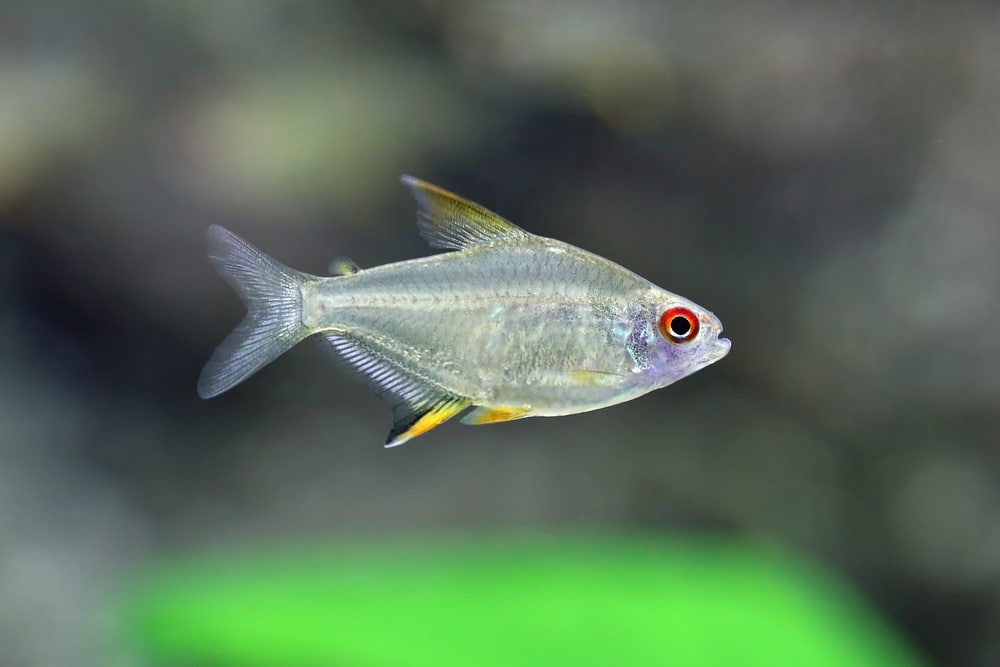
Lemon Tetras are sometimes overlooked in favor of the more intensely colored Neon and Glolight Tetras. However they are some of my favorite schooling fish for the small community tank!
I always recommend keeping Lemon Tetras in planted aquariums. When kept in bare tanks they tend to wash out to an unattractive grey color. When given plenty of nearby cover to feel secure around they take on rich yellow and green tones to compliment their bright red eyes.
Like most tetras they are egg scatterers – and they aren’t nearly as easy to breed as Swordtails. Lemon Tetras need soft, acidic water and elevated temperatures (78-84F) to be conditioned for spawning.
Keep them away from small shrimp as they are predators and will eagerly pick apart Ghost or Cherry Shrimp.
- Scientific Name: Hyphessobrycon pulchripinnis
- Origin: South America
- Size: 2 inches
- Temperament: Peaceful; Schooling
Dwarf Gourami
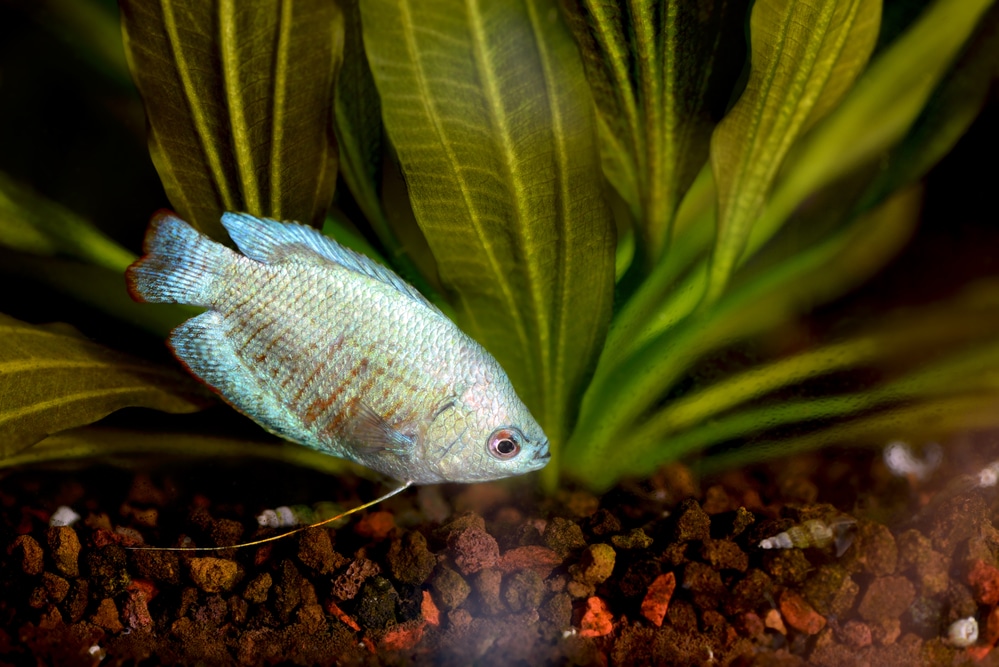
Gouramis come in all shapes and sizes. However the largest are not good tank mates for Swordtails as they are aggressive and territorial. Medium to small Gouramis are best, with the Dwarf Gourami being ideal.
This species is also one of the most colorful, with a red and blue banded pattern that grows even more intense during the breeding season. Dwarf Gouramis will occasionally spar with one another but are entirely peaceful towards their tank mates.
As Southeast Asian natives they love heat (80F+) and soft, acidic water! Gouramis also prefer no current; they are slow swimmers and have adaptations to thrive in low-oxygen ponds and marshes.
Like Bettas Gouramis can breathe atmospheric air thanks to their labyrinth organ! So if you see your Dwarf Gourami taking a gulp at the surface, don’t worry, he’s entirely healthy!
Other small to medium sized Gouramis, including the Honey (Trichogaster chuna) and Sparkling Gourami (Trichopodus leerii) live peacefully with Swordtails!
- Scientific Name: Trichogaster lalius
- Origin: South Asia
- Size: 2-3 inches
- Temperament: Peaceful
Dwarf Otocinclus
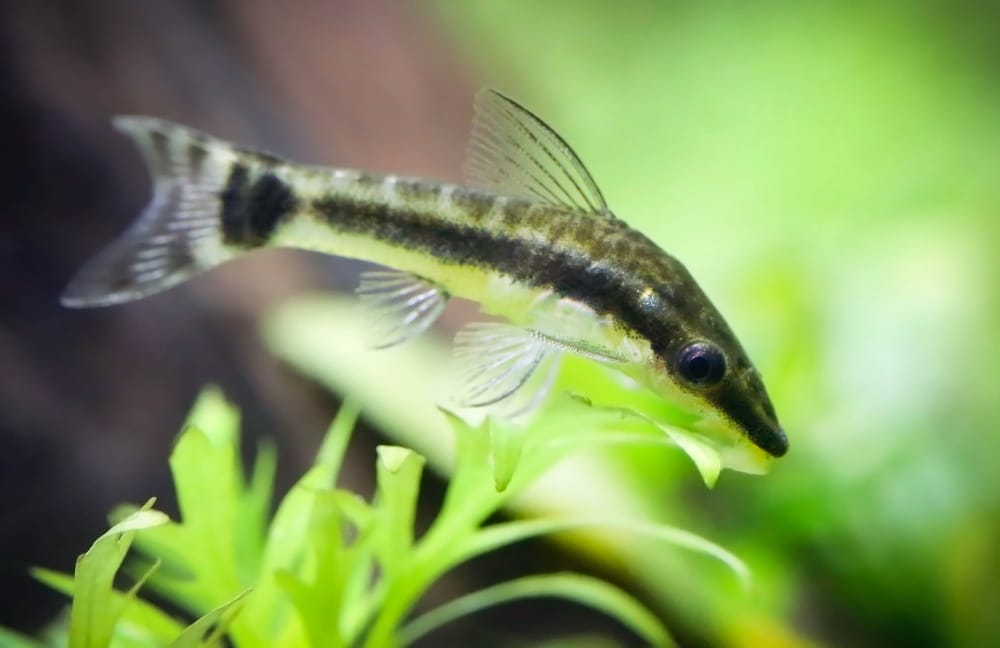
Otocinclus are actually a small genus of suckermouth catfish closely related to Plecostomus! Like their larger cousins, Dwarf Otos are eager algae eaters, consuming hair, green, and beard algae with relish. They won’t touch brown algae or blue-green cyanobacteria but any plant-based algae is fair game.
Otos are also much more peaceful than larger Plecos and prefer being kept in small shoals of at least 6 individuals. In the wild they form schools of hundreds of fish so keep a few so they are encouraged to stay out in the open!
Unless you have a huge tank or serious nutrient imbalances your Dwarf Otocinclus will eventually consume most of the available algae. When that happens you’ll need to have sinking vegetarian wafers on hand to keep them well fed!
- Scientific Name: Otocinclus vittatus & related species
- Origin: South America
- Size: 1 to 1½ inches
- Temperament: Peaceful; Schooling
Bumblebee Goby
Gobies are delightful to watch. The majority are saltwater however there are quite a few in the freshwater trade. Typically they are either camouflaged or dazzling in color and sit at the bottom only to suddenly dash about in comical bursts of action.
Bumblebee Gobies are technically brackish water fish – however they do thrive in full freshwater. Many brackish fish wither and die but a hint of aquarium salt helps these Gobies – as well as Swordtails – thrive!
Since they rarely grow beyond 1 inch Bumblebee Gobies are technically nano fish. While Swordtails grow quite a bit larger they are entirely peaceful and won’t give the Gobies a hard time.
Bumblebee Gobies thrive on fresh and frozen offerings like Daphnia and Brine Shrimp but can be trained with time to flake and other standard aquarium fare.
They are slightly territorial towards one another as well. So make sure there are plenty of breaks in line of sight along the bottom to keep fights under control.
- Scientific Name: Brachygobius xanthozonus
- Origin: Thailand & Indonesia
- Size: 1 inch
- Temperament: Peaceful; Territorial
Dwarf Crayfish
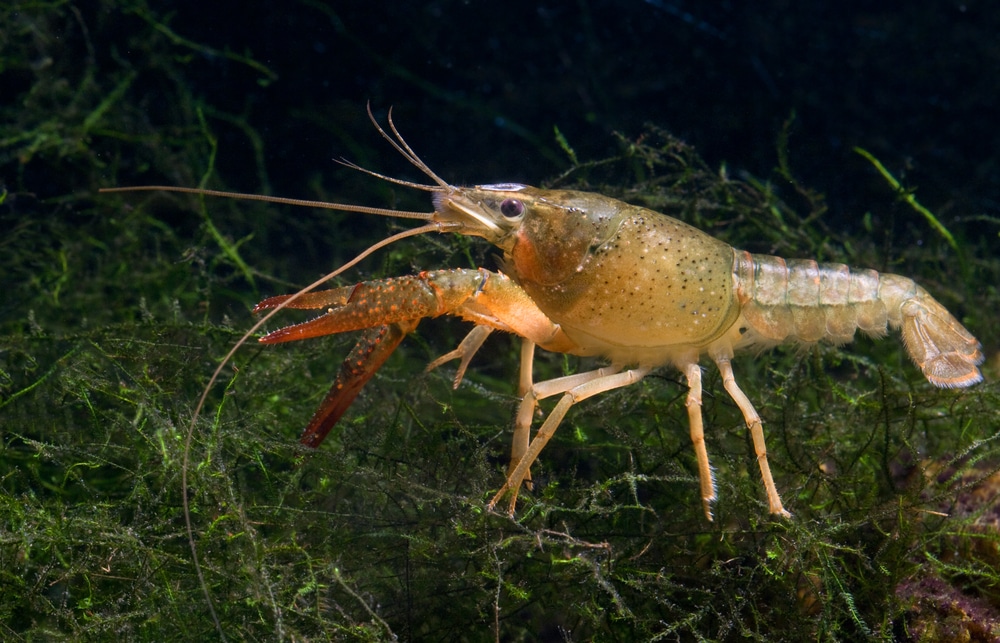
Most Crayfish are very poor tank mates for Swordtails. Their long fings and mid to bottom dwelling habits make it easy for a hungry Crayfish to grab hold of one.
However Dwarf Crayfish are very different from their larger cousins. All crustaceans are opportunists. But Dwarves don’t get much larger than an inch, making them safe for the majority of community aquariums.
Dwarf Crayfish come from North America and are found in Texas, Alabama, and the other Southern States. They will greedily devour anything organic, plant or animal-based.
Make sure you provide some hiding places your Dwarf Crayfish can fit in, though. All crustaceans eventually molt as they grow – their rigid exterior exoskeleton doesn’t grow with their insides.
They are exhausted, soft, and vulnerable for a few hours after a molt. Even normally peaceful fish like Swordtails often find a soft, defenseless Crayfish a very tempting target!
- Scientific Name: Cambarellus sp.
- Origin: Gulf Coast of Mexico & USA
- Size: 1½ inches
- Temperament: Semi-Aggressive; Predatory
Marbled Hatchetfish
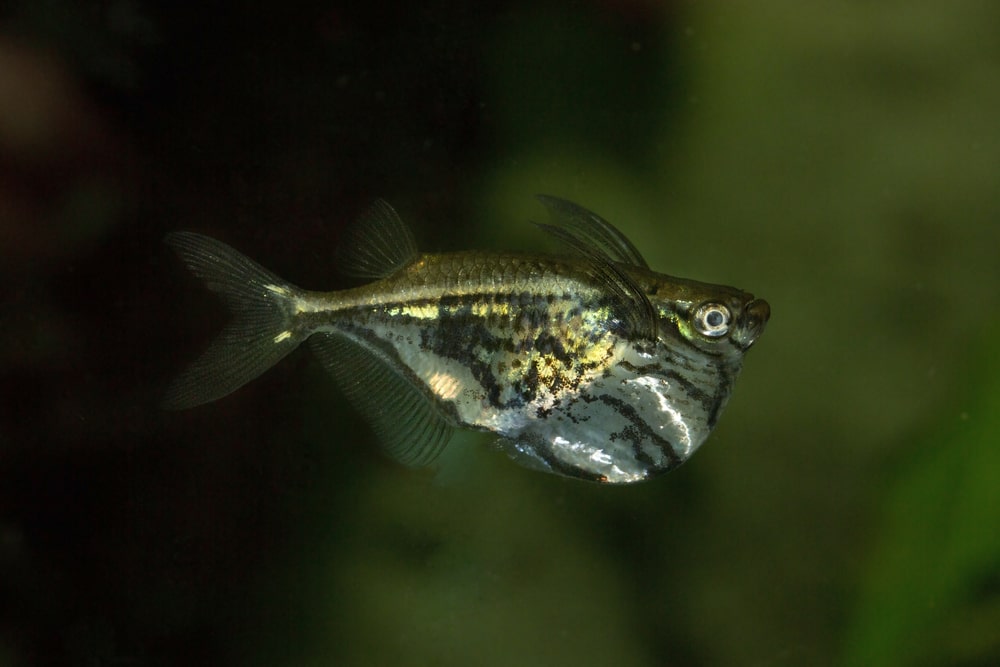
There are a few Hatchetfish that are found in the trade however the Marbled Hatchetfish is by far the most common. These are surface-dwelling schooling fish very closely related to Tetras, Silver Dollars, and Piranha!
However they have an extremely deep body to make room for powerful pectoral muscles. Believe it or not these fish are actually capable of true flight! In the wild they glide and flicker across the water’s surface to escape predators or snatch small insects from the air.
Obviously you’ll need a secure aquarium lid with no holes because when startled Hatchetfish occasionally launch themselves into the air. Otherwise they are easy to keep and feed.
Marbled Hatchetfish do have tiny mouths and need appropriately sized pellets and fresh food like brine shrimp nauplii. However they are peaceful and very unusual Swordtail tank mates!
- Scientific Name: Carnegiella strigata
- Origin: South America
- Size: 1½ inches
- Temperament: Peaceful; Schooling
Zebra Danio
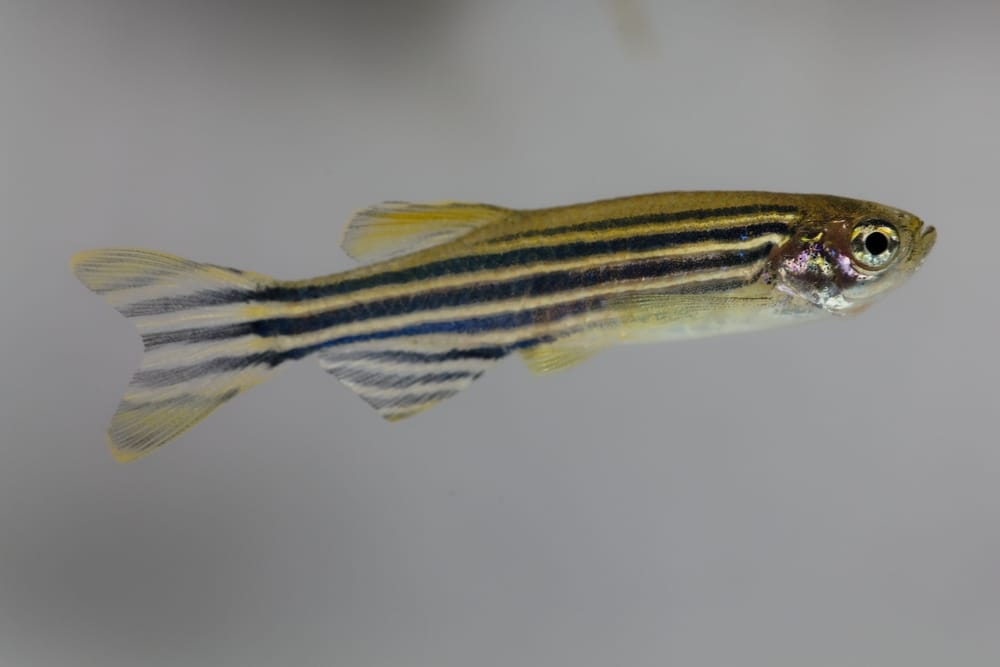
Zebra Danios are incredibly popular dither fish for several reasons. They are bred in huge numbers for both the aquarium hobby and scientific laboratories so they are quite inexpensive.
They are beautiful, schooling, bold, and tolerant of a wide range of water conditions. Danios do prefer things slightly cooler (70-75F) and neutral water conditions but will thrive and even breed well outside this range.
Zebra Danios were also the first fish to gain the Glofish title! Thanks to some scientific wizardry using coral and jellyfish DNA, these fish contain fluorescent proteins that cause them to glow under UV lighting.
Like most Cyprinids (Goldfish, Barbs, Rasboras) they are omnivores that need both plant and animal matter in their diet! Standard flake food contains enough of both categories to meet their nutritional needs!
- Scientific Name: Danio rerio
- Origin: South Asia
- Size: 2 inches
- Temperament: Peaceful; Schooling
Assassin Snail
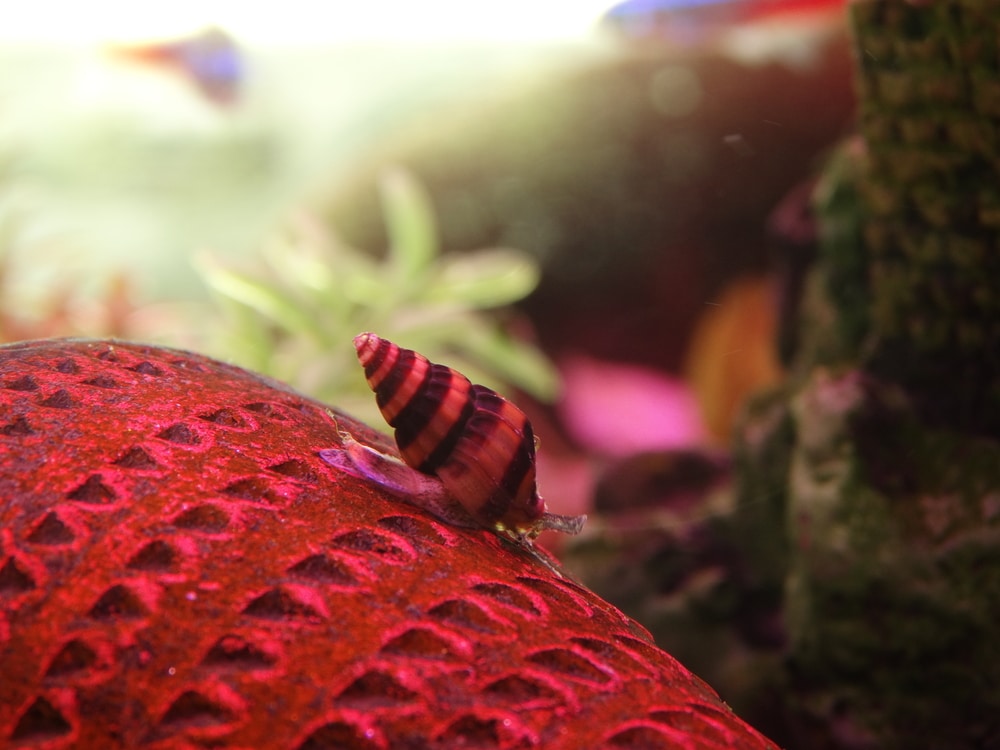
Snails can be problematic creatures. On the one hand they are excellent detritivores and star members of an aquarium cleanup crew. On the other if they take too much of a liking to your tank they tend to reproduce explosively.
Assassin Snails are quite different, though. Unlike Ramshorn, Nerite, and other Snails, they don’t eat algae: Assassin Snails are carnivorous. They’ll go for protein-rich flakes and pellets but really start hunting about when they smell dead fish, frozen bloodworms, chopped shrimp, and other favorites.
They also hunt other snails, using a needle-like mouth that extends their rasping radula (tongue) into the shell of their larger prey. Assassin Snails are great at eliminating problem Ramshorn Snail populations and won’t breed out of control.
When not feeding they prefer to spend a lot of time buried. So provide your Assassin Snails a sandy substrate.
When digging they also aerate the sand to keep dead spots from forming and improving the health of plant roots and microorganisms!
- Scientific Name: Clea helena
- Origin: Southeast Asia & Indonesia
- Size: 2 inches
- Temperament: Peaceful; Predatory
Amano Shrimp
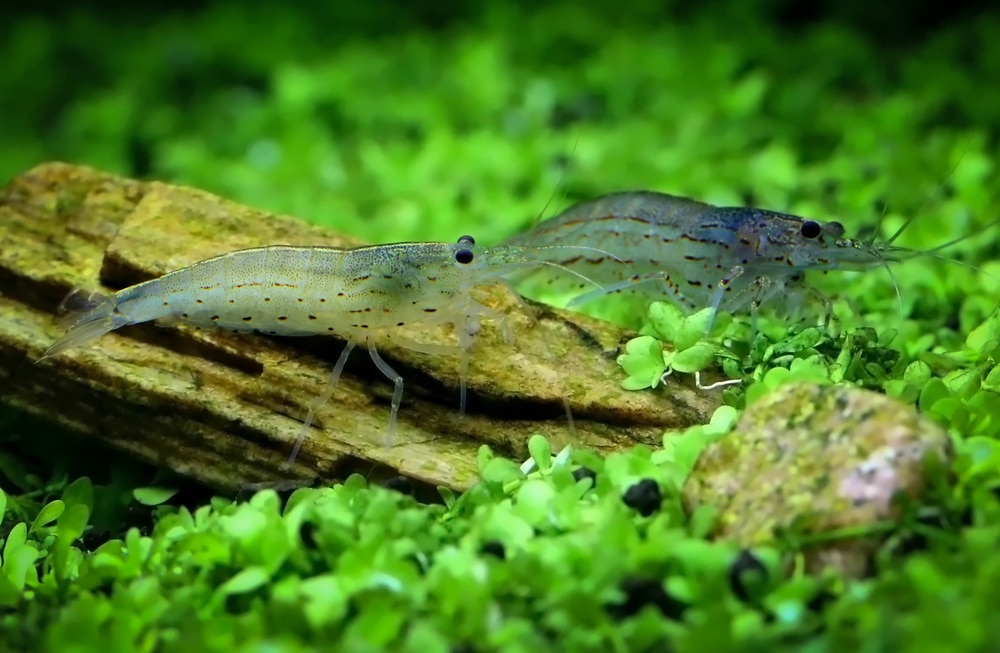
Shrimp are intriguing animals to watch however Swordtails grow large enough to be a threat to the tiny Bee and Ghost Shrimp.
Amano Shrimp are relatively robust and are great tank mates for Swordtails. They are avid algae eaters, picking through live plants to remove tufts of green. Like most Shrimp they are also detritivorous, scavenging leftover flakes and other treats that get lost in the substrate or decorations.
They prefer moderate conditions in terms of water chemistry (pH 6.5-7.5) and are quite hardy so long as you closely monitor nitrogenous waste buildup.
All invertebrates are sensitive to ammonia, nitrite, and nitrate relative to fish. Nitrate levels that fish can ignore may kill Shrimp so keep your readings below 20ppm and ideally 0ppm.
- Scientific Name: Caridina multidentata
- Origin: Japan & Taiwan
- Size: 2 inches
- Temperament: Peaceful

